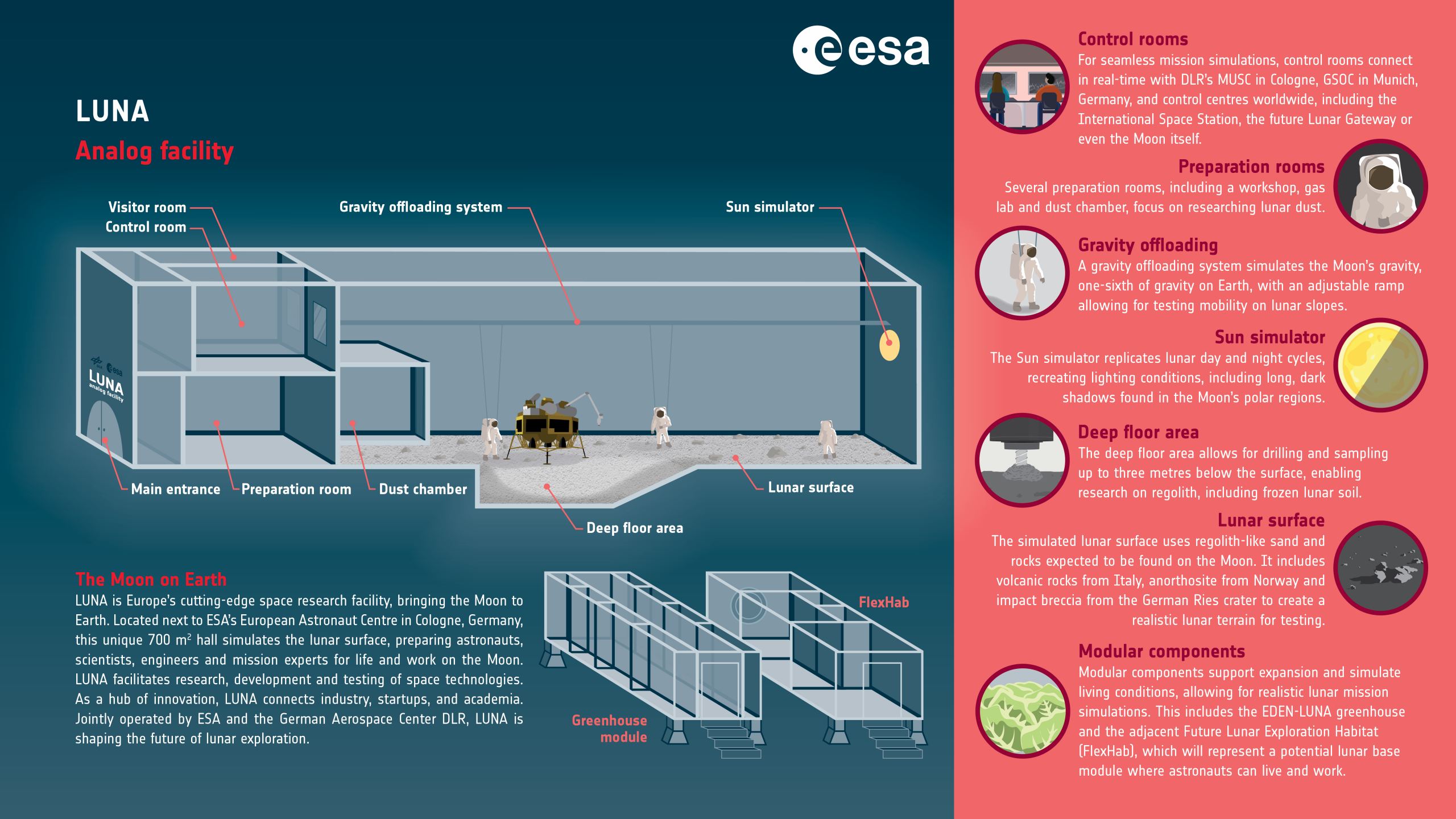Where do you go to practice living and working on the moon before you actually get there? This is the question that the European Space Agency and the German Aerospace Center wanted to answer. So, they worked together to build a model of the lunar surface near Cologne, Germany.
The name of this center is LUNA. It stands for “Lunar Analog”. Among other things, it features a simulated rock in a 700-square-meter hall where astronauts from ESA, NASA and other agencies can practice maneuvering in those conditions on the moon. “We have about 900 tons of rock-simulating material in the facility to simulate the dust environment and the mobility on the surface,” Jürgen Schlotz, LUNA facility engineer and head of lunar strategy at the European Space Agency, said at the facility’s first press briefing.
From the earth’s volcano to the surface of the moon
Lunar rock (the dusty material that covers the Moon’s surface) is the product of millions of years of bombardment of the Moon’s surface by meteorites and the solar wind. The moon shines on the basalt surface. The result is the bombardment of a very dense and fine dust. If astronauts want to live and work on the moon, they must learn to work with it. Therefore, the agency needed a simulator.

Since the Earth and the Moon have a similar geological history, it makes sense to look for materials on our planet to simulate lunar dust. For LUNA, the agency’s partners created something called EAC-1. It is based on volcanic dust that was spread in the Eifel region of Germany about 45 million years ago. ESA has been working with this material for several years, creating “moon bricks” that lunar colonies can use to build roads, launch pads and habitats. Not only that, but lunar soil (such as EAC-1) contains a high percentage of oxygen. If astronauts can practice “breaking” that soil on LUNA, the experience of doing the same will provide them with in-situ oxygen sources they can use to survive.
More information about LUNA
The main hall of LUNA is not just a dirt pit. It also has a specialized lighting simulator. This allows astronauts to recreate and practice their work during the lunar day and night cycles. A lunar “day” is 14 Earth days, and a lunar night is the same length. Future astronauts and colonies must adapt their living and working conditions to these cycles.
Finally, LUNA will also use gravity loading systems. These are simulations of reduced gravity environments. Because the moon’s gravity is one-sixth that of Earth, it is important for astronauts to train in less-gravity environments. These plans include a system similar to the Active Reaction Gravitational Evacuation System (ARGOS) used by NASA. It’s a device that suspends a trainee astronaut in a special trainer and uses sensors and other feedback to provide a simulated low-gravity environment.
In addition to training astronauts for low gravity and soil handling, LUNA will serve as a testbed for the operation of robotic systems such as rovers and other instruments. It enables advanced science experiments and activities and teaches astronauts how to build, manipulate and operate energy systems. For example, researchers at the center will test rock to understand the effects of lunar dust on equipment that space agencies plan to bring to the moon.

Preparing for Artemis and beyond
All of these activities should help astronauts and future mission planners develop solutions to the challenges Artemis and other lunar explorers will face. LUNA will also include a unique habitat learning area called FLEXHab. It is planned as a simulated habitat that connects to the main facility.
Finally, ESA and DLR plan to repurpose a food production facility called EDEN-ISS. It is actually a greenhouse that hosted a food growing experiment for five years. It will become part of the LUNA laboratory and is intended to help astronauts discover how to grow and prepare food during their stay on the moon.
Building exact replicas of the lunar environment is a major educational step toward permanent lunar habitation. Project Artemis will be one of the LUNA exploitation missions. The mission timeline is off, but astronauts will still likely head to the moon in the next decade. Test sites like LUNA will play an important role in their training and eventual colonization activities.
For more information
The new LUNA facility prepares astronauts for landing on the moon
A full-size reduced gravity simulator for humans, robots and test objects
Bricks from moon dust
#Europa #simulates #moon #Earth